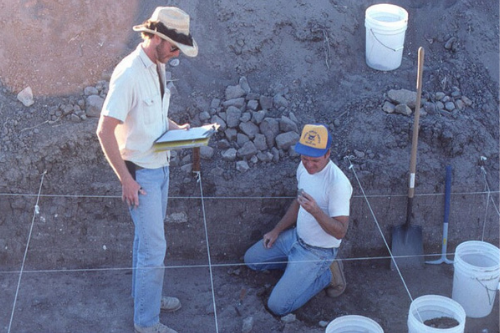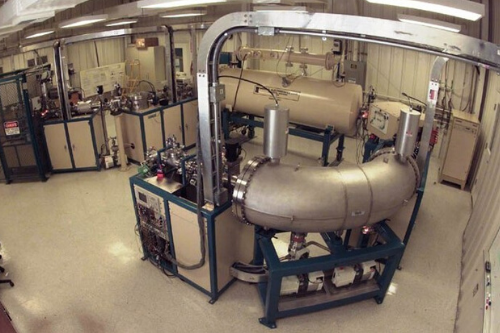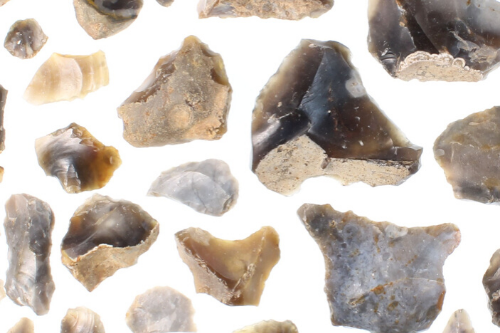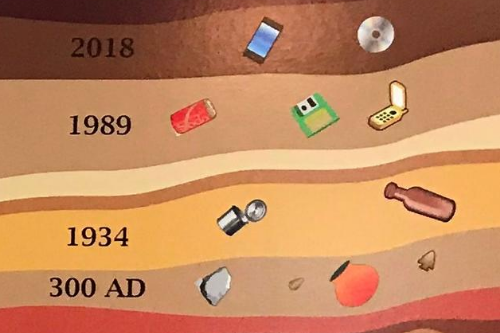
Dig Deeper: How Old is It? Relative Dating
Dig Deeper is a monthly blog focusing on the basics of archaeology by taking a closer look at the exhibition Archaeology 101, which is currently featured at the Center.
Introduction
Last month we discussed absolute dating, the science that allows archaeologists to determine definite dates for artifacts; let’s dig deeper and learn about RELATIVE DATING.
How Do Sites Become Buried?
People are generally surprised at the amount of dirt covering archaeological sites. Artifacts and features that archaeologists study have often been abandoned for hundreds and thousands of years. Weather, animals, vegetation, and you guessed it – HUMANS – contribute to the burial and layers uncovered while excavating sites.
Dust and debris may cover remains of a site when it is windy, or perhaps floods bring silt and soil, or during catastrophic events like Pompeii or Herculaneum, sites may be covered quickly and completely by ash and volcanic mud. Before environmental laws were in place, many humans would build over archaeological sites unknowingly — filling in holes to create a surface level in which they could then build upon. There are many attributes that bury history over time.
Strata
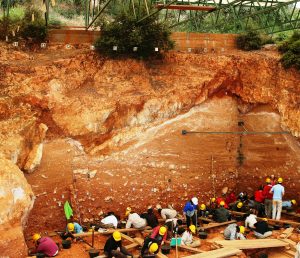 While artifacts and sites may be found by doing a survey of the surface area, in general most artifacts and ecofacts that archaeologists find are buried underground. Most archaeological sites have many layers corresponding to each event that added soil, dirt, and debris to a site. These different layers are referred to as strata. The deeper the strata, the older it is and the newer, or younger strata are found towards the top.
While artifacts and sites may be found by doing a survey of the surface area, in general most artifacts and ecofacts that archaeologists find are buried underground. Most archaeological sites have many layers corresponding to each event that added soil, dirt, and debris to a site. These different layers are referred to as strata. The deeper the strata, the older it is and the newer, or younger strata are found towards the top.
How Absolute Dating Can Aid Relative Dating
If you read last month’s blog then you know that when artifacts are found and can be dated using a form of absolute dating, like Carbon-14 testing, the other artifacts found at the same site may be dated by using relative dating. One way to use relative dating in conjunction with absolute dating is by assuming that the dates of artifacts found at a site are from around the same time.
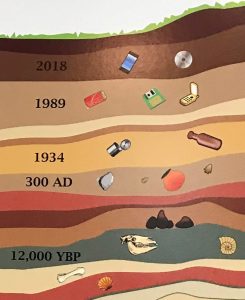 Using Stratigraphy to Date Artifacts
Using Stratigraphy to Date Artifacts
This also applies to stratigraphy (or the study of strata). If an artifact is found between two layers of strata, it can be assumed that the artifact is older than the layer above it and younger than the layer below it. This allows archaeologists to determine ages for the layers above and below the artifacts, and not necessarily for just the artifact itself. By using this method, many artifacts can be dated by looking at the strata surrounding them.
If there are artifacts that have known dates in a strata this is even more helpful because for example, if an artifact is found in the same layer as a flip phone, we can infer that the layer dates from 1989 or newer because flip phones were first introduced in 1989.
Conclusion
This concludes the Dig Deeper blog. We hope you learned a lot and can visit the exhibit Archaeology 101 in person soon. In October we will be back talking about ARCHAEOLOGY MONTH. Look forward to “seeing” you then!
By Jessica McPheters, Collections Manager
Learn More
Read more about the ancient Roman sites of Pompeii and Herculaneum.
Archaeology 101 Exhibit
Dr. Arty Fax’s Archy Facts


